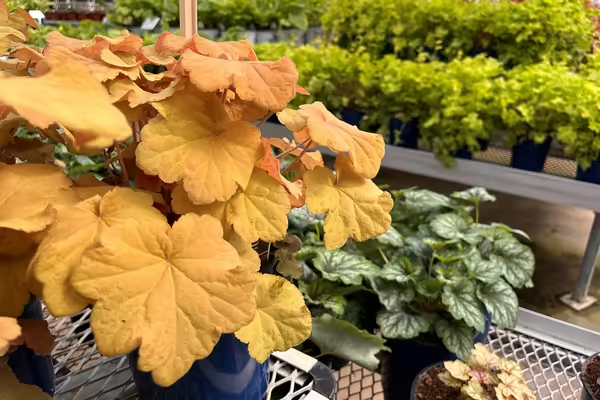
URBANA, Ill. — Did you know that despite Illinois' reputation as a prairie state, its landscape was once nearly a third forest? This fact opens up a wonderful world of native plants perfectly suited for shade gardens. Choosing these local beauties not only bolsters regional biodiversity but should also be a priority over introducing non-native species.
Selecting Shade Garden Spaces
When planning a shady retreat, pay close attention to the existing soil conditions, specifically moisture levels and organic matter content. While some resilient natives can handle dry shade, many others prefer consistently moist soil. For those that thrive in rich, organic soil, like wild ginger, stout blue-eyed grass, and false Solomon’s seal, the natural leaf litter from overhead trees provides an excellent source of nourishment. Consider leaving some of this plant debris in place to replenish the soil naturally. Remember that shade isn't just cast by trees. Buildings also create significant shadows, typically on their north and east sides. Finally, don't forget to factor in roof overhangs, as these can significantly reduce the amount of rainfall reaching certain areas.
Selecting Shade Garden Native Plants
The selection of native plants for shade gardens is truly impressive. While traditional shade-lovers like hostas, coral bells, lady's mantle, and pulmonaria are popular groundcovers, and hydrangeas, azaleas, and rhododendrons offer shrubby elegance, the native palette provides equally stunning and ecologically beneficial alternatives. For dry shade, consider the delicate charm of wild columbine, the spreading beauty of woodland phlox, the airy grace of tall anemone, the subtle texture of prairie alumroot, the reliable groundcover of Pennsylvania sedge, or the structural interest of Mapleleaf viburnum.
If the location is a wetter, shady spot, explore the lush foliage of wild ginger and wild geranium, the vibrant blue spikes of great blue lobelia, the delicate flowers of stout blue-eyed grass, the textured foliage of rosy sedge, and interesting fronds of cinnamon fern, or the bright berries of winterberry shrub. Interestingly, Christmas fern is a versatile native that tolerates both wet and dry shade.
Beyond these, other noteworthy native options include the architectural forms of Solomon’s seal and starry false Solomon’s seal, the ladder-like foliage of Jacob’s ladder, the late-season color of smooth blue aster and zigzag goldenrod, and the diverse textures of various sedge species. For a fleeting but beautiful display in early spring, consider incorporating spring ephemerals such as Virginia bluebells, Jack-in-the-pulpit, mayapple, toothwort, prairie trillium, bloodroot, hepatica, and spring beauty.
Shade Garden Tips
When establishing groundcover beneath established trees, opt for smaller plant sizes like plugs. Plugs are mini plants with roots less than five inches deep. This method minimizes disturbance to the soil and, crucially, the tree's root system. Digging around tree roots can be challenging and potentially harmful. Another approach is direct seeding, which requires patience as the plants establish and fill in over time. Be sure to keep seeds and plugs moist while they are becoming established.
To create a visually dynamic and interesting shade garden, select a mix of plants with both coarse and fine leaf textures. The large leaves of plants like hosta or wild ginger offer a bold contrast to the delicate, fine leaves of sedge species. While many shade-loving plants are primarily grown for their foliage, and some native flowers might be subtle or even hidden, like mayapple and wild ginger, they still play a vital role in attracting pollinators, providing essential early foraging opportunities for insects.
As the summer heat approaches, now is a wonderful time to cultivate a shade garden. It will become a tranquil escape from the sun's intensity, and with a bit of luck, gardeners will be rewarded with the sight of native pollinators buzzing around beautiful, locally adapted plants.
Learn more about various native plant selection, pollinators, and mapping garden spaces at the Illinois Pollinators website from University of Illinois Extension. For questions, connect with a location Extension office from the map.
Nancy Kreith is a University of Illinois Extension horticulture educator for Cook County. Gardeners Corner is a quarterly newsletter from gardening experts around the state. Each issue highlights best practices that will make your houseplants, landscape, or garden shine in any season.
Caption: Coral bells plant selection in the garden center. Photo by Nancy Kreith, Illinois Extension. Photo available for media download, including credits.
University of Illinois Extension develops educational programs, extends knowledge, and builds partnerships to support people, communities, and their environments as part of the state's land-grant institution. Extension serves as the leading public outreach effort for University of Illinois Urbana-Champaign and the College of Agricultural, Consumer and Environmental Sciences in all 102 Illinois counties through a network of 27 multi-county units and over 700 staff statewide. Extension’s mission is responsive to eight strategic priorities — community, economy, environment, food and agriculture, health, partnerships, technology and discovery, and workforce excellence — that are served through six program areas — 4-H youth development, agriculture and agribusiness, community and economic development, family and consumer science, integrated health disparities, and natural resources, environment, and energy.